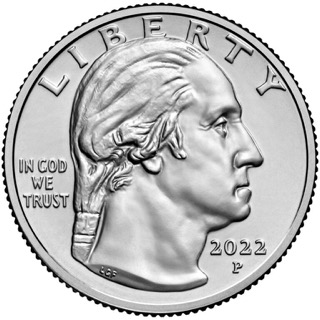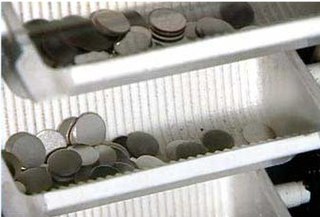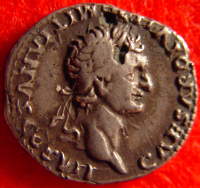Causes
Annealing Errors
During the annealing process of die making, two main errors can occur, resulting in less than perfect dies. It is impossible to tell without expensive and lengthy tests whether these errors occurred, but they will lead to significantly weaker dies and a higher tendency to deteriorate quickly. The first thing which can happen to a die in this process what metallurgists call decarburization. Decarburization is the result of an improper mix of metals and chemicals in the annealing furnace where the dies are sent to soften. If there is not enough ambient carbon in the furnace, the steel will give up some of its carbon and will become soft. The result is a thin surface of inadequate metal whose chemical composition has been altered and is below standard.
Another less obvious error can also occur when heating the dies. After being taken out of the annealing furnace, the dies must cool for 24 to 36 hours. They are usually given an oil bath to cool them more quickly, but the dies must still cool for a period of several hours. When the dies are cooling, if they are not stored properly or not allowed to fully cool before being used, the result is a much softer die. When the die is subjected to the hubbing press again and work hardened again, it will be softer and more susceptible to wear. If the die is softer because it was not fully cooled, it will not harden to the same standard as a die which has received proper treatment. However, there will not be a noticeable difference between a good die and a bad die; the change in the structure of the die is not apparent until it is used for a period of time.
Overuse of Dies
In modern presses, a die strikes approximately 120 coins a minute. This is a large number of coins produced in a short time, and obviously the die cannot last forever. However, the process of wearing the die is only hastened by the metals used in coins. Nickel, one of the main metals used in today’s coins, is quite hard and causes wear quickly. Copper has been used for centuries because of its malleability and the ease with which it makes coins. However, it too wears the dies when they are used for too long. An infamous example is the 1955 "poorman’s double die." This coin is sold as a replacement for the 1955 doubled die cent, but it is no more than Die Deterioration Doubling, caused by wear on the dies.
When a coin is struck, the planchet is not heated. Although the planchet would be softer and more malleable, the extra time and expense would prove too great for the Mint. The planchet is therefore struck at room temperature, and the only thing which makes the coin form is the tremendous pressure used to strike it. With a metal such as nickel, which is harder than a normal coin metal like silver, gold or copper, the pressure must be greater. When a nickel coin, or any coin, is struck, the metal must "flow" into the contours of the front and back dies. It is through the atoms of the metal flowing into the dies that flow lines are created. However, when metal flows over a sharp corner in the die, like the edges of a mintmark or words, it tends to roll the detail out. It wears on the die, and a little detail is lost with every strike. Die Deterioration Doubling is most prevalent on the date and mintmark because these fine details are alone in the middle of the field, and the metal must flow into these without the help of other valleys nearby. When the metal rolls into the mintmark or date, it wears away the corner of the die, and after long enough will appear on the coin as Die Deterioration Doubling.
In addition, the mint has a practice of polishing the dies and using them longer. When a die begins to show evidence of wear, a mint technician will polish the die and reuse it. However, the die is still rapidly deteriorating, and polishing it cannot avoid the problem of wear. So, after many thousand coins in rapid succession, the wear on the die has gotten so bad that it appears as Die Deterioration Doubling.
Identification
Die deterioration doubling is a result of a few simple causes, but it can be difficult to positively identify. There are a number of different features which appear similar, but the characteristic traits of each are easy to identify with practice. Die deterioration doubling is often mistaken for hub doubling. The causes of the two types of doubling are different, but their appearance on the finished coin is often similar. Die deterioration doubling appears most often around the mintmark and date because they are alone in the field. When it occurs in other features, like an image of a bust, it looks more like a weak strike than doubling.
Close examination of affected features show that the doubling is extremely irregular. This is because the coin metal does not flow from just one direction, but flows and produces wear on the die from all sides. There is no definite shape, and it can take on several different but similar appearances. It often looks like a thin metal shelf or spreading spot. It can also make lettering appear thick and twisted. There are no crisp lines affected, but things generally look bloated, enlarged, blurry, twisted, and damaged. This is different from hub doubling, because hub doubling appears as a crisp secondary image, rotated minutely from the original. When casually glancing at a coin, the difference is not easy to tell, but when magnified, the difference is obvious on most coins. Another easy way to tell hub doubling from die deterioration doubling is the presence of notched serifs; the small flairs on the ends of letters will appear distinctly separated with the former, whereas they appear just blurry and washed out with the latter.

The quarter, formally known as the quarter dollar, is a coin in the United States valued at 25 cents, representing one-quarter of a dollar. Adorning its obverse is the profile of George Washington, while its reverse design has undergone frequent changes since 1998. Since its initial production in 1796, the quarter dollar has held a significant place in American numismatics, with consistent production since 1831.
Coins of the United States dollar – aside from those of the earlier Continental currency – were first minted in 1792. New coins have been produced annually and they comprise a significant aspect of the United States currency system. Circulating coins exist in denominations of 1¢, 5¢, 10¢, 25¢, 50¢, and $1.00. Also minted are bullion, including gold, silver and platinum, and commemorative coins. All of these are produced by the United States Mint. The coins are then sold to Federal Reserve Banks which in turn put coins into circulation and withdraw them as demanded by the United States economy.

The penny, formally known as the cent, is a coin in the United States representing one-hundredth of a dollar. It has been the lowest face-value physical unit of U.S. currency since the abolition of the half-cent in 1857.

1943 steel cents are U.S. one-cent coins that were struck in steel due to wartime shortages of copper. The Philadelphia, Denver, and San Francisco mints each produced these 1943 Lincoln cents. The unique composition of the coin has led to various nicknames, such as wartime cent, steel war penny, zinc cent and steelie. The 1943 steel cent features the same Victor David Brenner design for the Lincoln cent which had been in use since 1909.
Mint-made errors occur when coins are made incorrectly at the mint, including anything that happens to the coin up until the completion of the minting process. Mint error coins can be the result of deterioration of the minting equipment, accidents or malfunctions during the minting process, or interventions by mint personnel. Coins are inspected during production and errors are typically caught. However, some are inadvertently released into circulation. Modern production methods eliminate many errors and automated counters are effective at removing error coins. Damage occurring later may sometime resemble true mint errors. Error coins may be of value to collectors depending on the rarity and condition. Some coin collectors specialize in error coins.

The United States Mint is a bureau of the Department of the Treasury responsible for producing coinage for the United States to conduct its trade and commerce, as well as controlling the movement of bullion. The U.S. Mint is one of two U.S. agencies that manufactures physical money. The other is the Bureau of Engraving and Printing, which prints paper currency. The first United States Mint was created in Philadelphia in 1792, and soon joined by other centers, whose coins were identified by their own mint marks. There are currently four active coin-producing mints: Philadelphia, Denver, San Francisco, and West Point.

A planchet is a round metal disk that is ready to be struck as a coin. An older word for planchet is flan. They are also referred to as blanks.

The 1955 doubled die cent is a die variety that occurred during production of the one cent coin at the United States Mint in 1955.

Doubled die is a term in numismatics used to refer to a duplication of design elements on a working die created due to a misalignment of the die or hub during the hubbing process. Strength of the doubling can vary from very slight and isolated to extreme and widespread. The exact cause of the doubling can also vary, which is why a class system was created to outline the known and hypothesized causes.

The Mercury dime is a ten-cent coin struck by the United States Mint from late 1916 to 1945. Designed by Adolph Weinman and also referred to as the Winged Liberty Head dime, it gained its common name because the obverse depiction of a young Liberty, identifiable by her winged Phrygian cap, was confused with the Roman god Mercury. Weinman is believed to have used Elsie Stevens, the wife of lawyer and poet Wallace Stevens, as a model. The coin's reverse depicts a fasces, symbolizing unity and strength, and an olive branch, signifying peace.

The Indian Head cent, also known as an Indian Head penny, was a one-cent coin ($0.01) produced by the United States Bureau of the Mint from 1859 to 1909. It was designed by James Barton Longacre, the Chief Engraver at the Philadelphia Mint.

The United States large cent was a coin with a face value of 1/100 of a United States dollar. Its nominal diameter was 11⁄8 inch (28.57 mm). The first official mintage of the large cent was in 1793, and its production continued until 1857, when it was officially replaced by the modern-size one-cent coin.
This glossary of numismatics is a list of definitions of terms and concepts relevant to numismatics and coin collecting, as well as sub-fields and related disciplines, with concise explanations for the beginner or professional.

The Shield nickel was the first United States five-cent piece to be made out of copper-nickel, the same alloy of which American nickels are struck today. Designed by James B. Longacre, the coin was issued from 1866 until 1883, when it was replaced by the Liberty Head nickel. The coin takes its name from the motif on its obverse, and was the first five-cent coin referred to as a "nickel"—silver pieces of that denomination had been known as half dimes.

Coin roll hunting is the hobby of searching and sorting coinage pulled from circulation for collectible coins. This is achieved through obtaining rolled coin, boxed coin, or bagged coin from banks and credit unions. A variant of this practice involves banknotes and is carried out in essentially the same fashion, normally to search for unusual serial numbers, star notes, and misprints.

Coin counterfeiting of valuable antique coins is common; modern high-value coins are also counterfeited and circulated. Counterfeit antique coins are generally made to a very high standard so that they can deceive experts. This is not easy and many coins still stand out.

This article provides an outline of the currency of Spanish America from Spanish colonization in the 15th century until Spanish American independencies in the 19th. This great realm was divided into the Viceroyalty of New Spain, which came to include all Spanish territory north of Panama, the West Indies, Venezuela, and the Philippines, and the Viceroyalty of Peru, which included Panama and all Spanish territory in South America except Venezuela. The monetary system of Spanish America, originally identical to that of Spain, soon diverged and took on a distinctive character of its own, which it passed on to the independent nations that followed after.
Minting, coining or coinage is the process of manufacturing coins using a kind of stamping, the process used in both hammered coinage and milled coinage. This "stamping" process is different from the method used in cast coinage.

The Lincoln cent is a one-cent coin that has been struck by the United States Mint since 1909. The obverse or heads side was designed by Victor David Brenner, as was the original reverse, depicting two stalks of wheat. The coin has seen several reverse, or tails, designs and now bears one by Lyndall Bass depicting a Union shield. All coins struck by the United States government with a value of 1⁄100 of a dollar are called cents because the United States has always minted coins using decimals. The penny nickname is a carryover from the coins struck in England, which went to decimals for coins in 1971.
US error coins are error coins produced by the US government. There are three categories of error coins as provided by the American Numismatic Association. Metal usage and striking errors referred to widely as planchet errors, die errors, and mint striking errors. This does not include the varieties that the US Mint has issued over the years.















